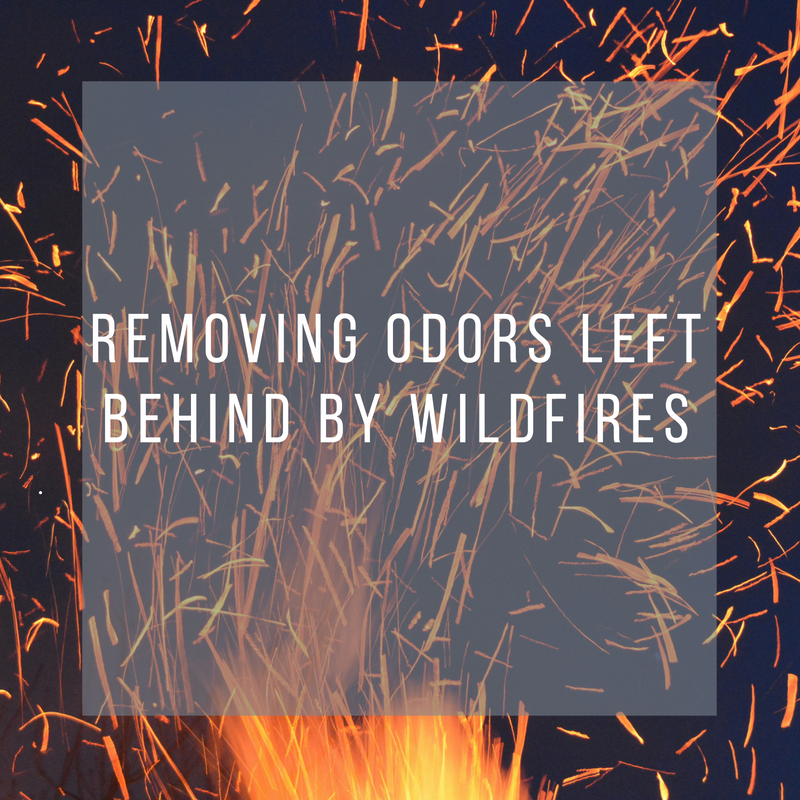Removing Odors Left Behind by Wildfires
The warmer summer months may mean the shedding of the layers of clothing that were quite necessary during the Colorado winter, but that warm weather also comes with risks. One risk that Durango and surrounding areas are experiencing is wildfires, which have the ability to ruin a large swath of land quite swiftly. The 416 Fire that is currently burning has left its mark on Durango, scarring over 34,000 acres of land in the area. However, the firefighting support that our Durango firefighters have received, as well as a few cooler days, has helped to keep the residents of this beautiful and scenic area safe. Although you may not have had to evacuate your residence, the wildfire still has left its mark. Removing the odors that are left behind after a wildfire can be challenging, as the smoke can permeate just about any surface. However, there are a variety of ways to remove the smell left behind by wildfires.

Removing Smoke from the Air
With a wildfire still burning, it may not be possible to open the windows to let in fresh air. One way to remove smoke from the air in your home is through placement of several small bowls of baking soda in each room. The baking soda can help to remove the smell through absorbing the odors associated with a variety of sources, including wildfires. You can also use activated charcoal in a similar manner. Whichever method you decide to use, it is recommended to leave the bowls or sachets in each room for a few days, keeping closet doors open to aid in ridding the odors from these often-closed areas.
Another more obvious way to remove odors would be through the use of air purifiers. Make sure to choose one rated for smoke removal! Another note is to make sure it’s rated for the square footage of your home. Most homes would require a minimum of 2. One note of caution when trying to remove wildfire smell from the air in your home is to refrain from using commercial air fresheners, as these can only mask the smell and add extra chemicals to the air that will not help to remove the source of the odor. If you must use an air freshener, The Lung Association recommends a solid-type versions over those which spray into the air.
Removing Smoke from Clothing
Even with leaving bowls of baking soda or activated charcoal in your closets, your clothes may still have that lingering smell. For items that are machine washable, it is recommended to wash your clothes according to manufacturer’s suggestions, adding a cup of white vinegar to your laundry load, in addition to your normal laundry detergent. If the smell still lingers when you take it out of the washing machine, repeat the steps until the scent no longer remains. Make sure to check each item though, as you do not want to place the items into the dryer until you know that the smell has been removed from every piece of clothing in your wash load. Omitting this step can make the smell even worse, which is contrary to your goal of smoke odor removal.
Removing Smoke from Carpeting and Upholstery
Another porous material in your house that can act like a sponge for several odors, including wildfire smoke, is your carpet! In some instances, sprinkling some baking powder on your carpet, allowing it to work at the source of the smell that is often deeply embedded in your carpet, can help to reduce the smell of smoke that has permeated into your home. After leaving it on for several hours, use a HEPA-equipped vacuum to ensure the smoke is not blown back into the air. If the smell remains, even after several rounds of sprinkling baking soda and vacuuming it up, you may need to use a commercial-grade carpet cleaner or steam cleaner to rid your home of the smell that lingers after a wildfire.
Conclusion
As we enter fire season here in Durango, we are keenly aware of the damage such events can have on those who reside in this beautiful section of Colorado. With the 416 Fire burning since the beginning of June, there has been ample opportunity for smoke to make its way into your home. Fortunately, there are a variety of ways to reduce the smell inside, many of which are eco-friendly too!



